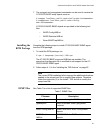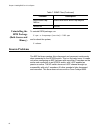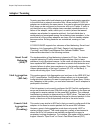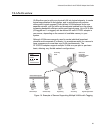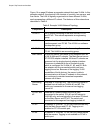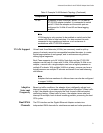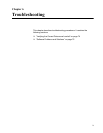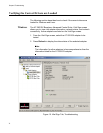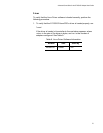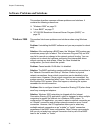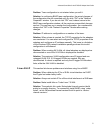
Advanced Control Suite for the AT-2931SX Adapter User’s Guide
71
Note
VLAN tagging is only required to be enabled on switch ports that
create trunk links to other switches. It is also required on ports
connected to tag-capable end-stations, such as servers or
workstations with AT-2931SX adapters.
VLANs Support Virtual Local Area Networks (VLANs) are commonly used to split up
groups of network users into manageable broadcast domains, to create
logical segmentation of workgroups, and to enforce security policies
among logical segments.
Each Team supports up to 64 VLANs. Note that only the AT-2931SX
adapters can be part of a team with VLANs. With multiple VLANs on an
adapter, a server with a single adapter can have a logical presence on
multiple IP subnets. With multiple VLANs in a team, a server can have a
logical presence on multiple IP subnets and benefit from load balancing
and failover.
Note
Adapters that are members of a failover team can also be configured
to support VLANs.
Adaptive
Interrupt
Frequency
Based on traffic conditions, the adapter driver intelligently adjusts host
interrupt frequency to increase overall application throughput. When traffic
is light, the adapter driver interrupts the host for each received packet,
minimizing latency. When traffic is heavy, the adapter issues one host
interrupt for multiple, back-to-back incoming packets, preserving the host
CPU cycles.
Dual DMA
Channels
The PCI interface on the Gigabit Ethernet Adapter contains two
independent DMA channels for simultaneous read and write operations.
PC #5 A member of both VLANs #1 and #2, PC #5 has an
AT-2931SX adapter installed. It is connected to switch
port #10. Both the adapter and the switch port are
configured for VLANs #1 and #2 and have tagging
enabled.
Table 8. Example VLAN Network Topology (Continued)
Component Description



